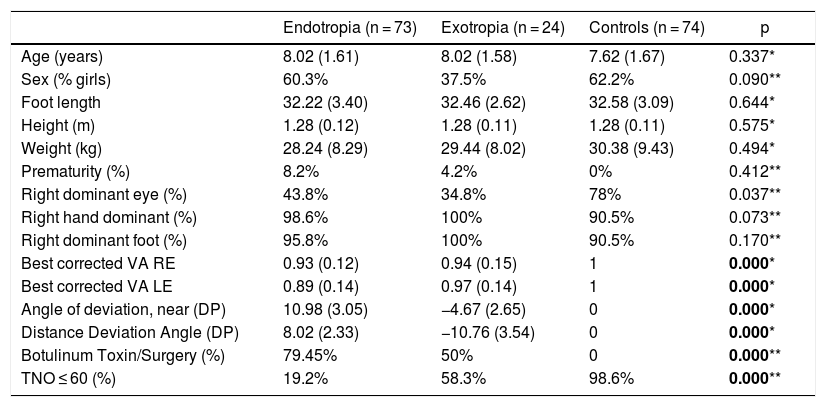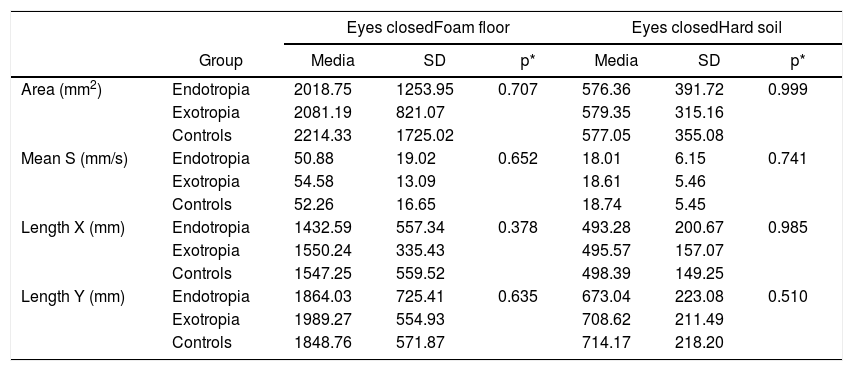To compare the postural control of children with strabismus versus non-strabismus children.
Material and methodsCross-sectional cohort study with a total of 171 children, including 73 children with esotropia, 24 with exotropia, and 74 controls. Postural control was determined using a dynamometric platform in a standing position in various conditions: eyes open and eyes closed, near and gaze fixation, and with and without foam pad. The studied variables were the area, the mean speed, and the lengths in the X and Y axis of the centre of pressure displacement.
ResultsChildren with esotropia and exotropia had significantly higher mean values (speed, lengths of X and Y) compared to controls. In the open-eye, far distance fixation, and on foam pad, as well as under exam conditions; with eyes open, without foam pad, and far distance fixation, the exotropia values were higher than those of endotropia and controls. With eyes closed, there were no differences between the three groups under the described examination conditions, but their values were worse compared to their respective ones with eyes open.
ConclusionsThe children with strabismus had a worse postural control than the non-strabismus ones. All of the them appeared to be more unstable with eyes closed than with eyes open, which demonstrates that vision plays an important relevant role in postural stability in both strabismus and non-strabismus children.
Comparar el control postural de niños estrábicos frente a niños sin estrabismo.
Material y métodosCohortes transversales. Se incluyeron un total de 171 niños: 73 niños con endotropia, 24 con exotropia y 74 controles. El control postural fue explorado mediante una plataforma dinamométrica en posición de pie, en varias condiciones: ojos abiertos y cerrados, fijación de mirada cercana y lejana; y sobre suelo duro y gomaespuma. Se estudiaron como variables: el área, la velocidad media, las longitudes en el eje X e Y del desplazamiento del centro de presión.
ResultadosLos niños con endotropia y exotropia presentaron valores de velocidad media, longitud X e Y significativamente mayores frente a los controles en el examen de ojos abiertos, distancia de fijación lejana y sobre suelo de gomaespuma; con ojos abiertos, sobre suelo duro y distancia lejana, los valores de las exotropias fueron mayores que los de endotropias y controles. Con ojos cerrados, no hubo diferencias entre los tres grupos en todas condiciones de exploración descritas, pero sus valores empeoraban frente a sus respectivos con ojos abiertos.
ConclusionesLos niños estrábicos presentaron un peor control postural que los niños no estrábicos. Todos los niños se mostraron más inestables con ojos cerrados frente con ojos abiertos lo que demuestra que, tanto para estrábicos como no estrábicos, la visión juega un papel relevante en la estabilidad postural.











